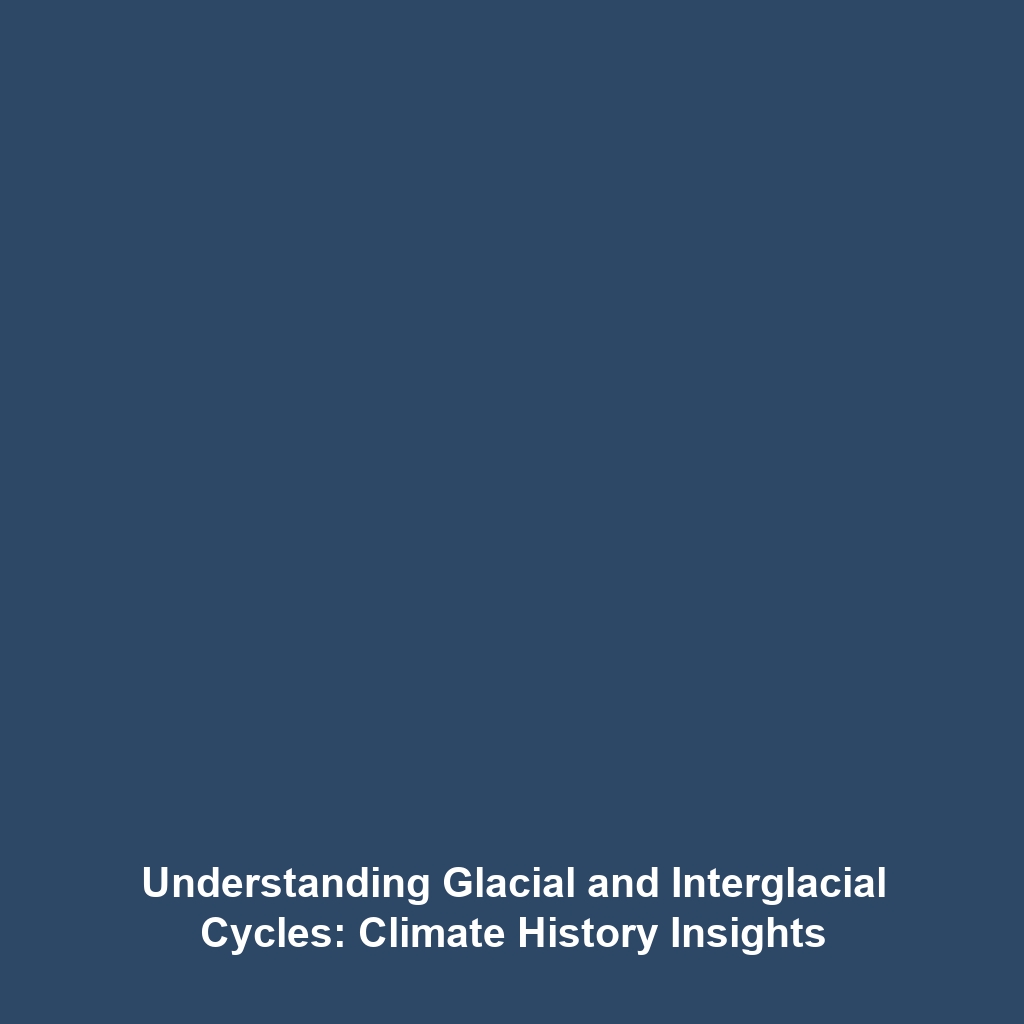Glacial and Interglacial Cycles in Climate History
Introduction
Glacial and interglacial cycles are critical phenomena that illuminate the nuances of climate history. These natural oscillations in Earth’s climate system, characterized by alternating periods of extensive ice cover and warm interludes, provide profound insight into the planet’s changing climate. Understanding these cycles is not only vital for comprehending past climatic conditions but also has significant implications for predicting future climate trends and their global impacts.
Key Concepts
The Climate Models
The glacial and interglacial cycles have been extensively analyzed using climate models which incorporate various factors such as:
- Orbital Changes: Variations in Earth’s orbit and tilt influence solar radiation distribution.
- Greenhouse Gases: Changes in carbon dioxide and methane levels are crucial for understanding temperature changes.
- Ocean Currents: Shifts in ocean circulation patterns affect climate zones globally.
Implications for Climate History
These cycles serve as a lens through which we can examine the long-term trends in Earth’s climate history. The patterns observed in data derived from ice cores, sediment layers, and geochemical markers emphasize how glacial periods, typically lasting tens of thousands of years, give way to warmer interglacials. Such knowledge is essential for framing current climate change debates.
Applications and Real-World Uses
Understanding glacial and interglacial cycles has several practical applications within the context of climate history:
- Paleoclimatology: By reconstructing past climate conditions, researchers can draw parallels to contemporary climate change phenomena.
- Climate Policy Making: Insights from these cycles inform government policies on climate adaptation and mitigation strategies.
- Environmental Planning: Urban planners utilize data on historical climate trends to anticipate the impacts of climate change on infrastructure.
Current Challenges
Studying glacial and interglacial cycles presents numerous challenges within the broader framework of climate history:
- Data Gaps: Some regions lack comprehensive paleoclimate data, making it difficult to paint a complete picture.
- Complex Interactions: The interplay of various climatic components complicates model predictions.
- Anthropogenic Influence: Current human activities may complicate the natural cycles observed in historical data.
Future Research and Innovations
Emerging research seeks to enhance our understanding of glacial and interglacial cycles, with several promising avenues being explored:
- Advanced Climate Models: Continued improvements in AI and machine learning applications will refine predictive capabilities.
- Geoengineering: Research into geoengineering solutions may help mitigate the effects of climate extremes linked to these cycles.
- Interdisciplinary Studies: Collaborative efforts among climatologists, ecologists, and geologists will broaden the scope of research and findings.
Conclusion
In summary, glacial and interglacial cycles are not merely a historical curiosity; they are fundamental to understanding our planet’s climate legacy and future trajectory. As scientific inquiry continues to unfold, it is vital for researchers, policymakers, and the public to engage with this knowledge actively. For more insights on climate history, explore our articles on paleoclimate studies and the impacts of climate change.

Leave a Reply